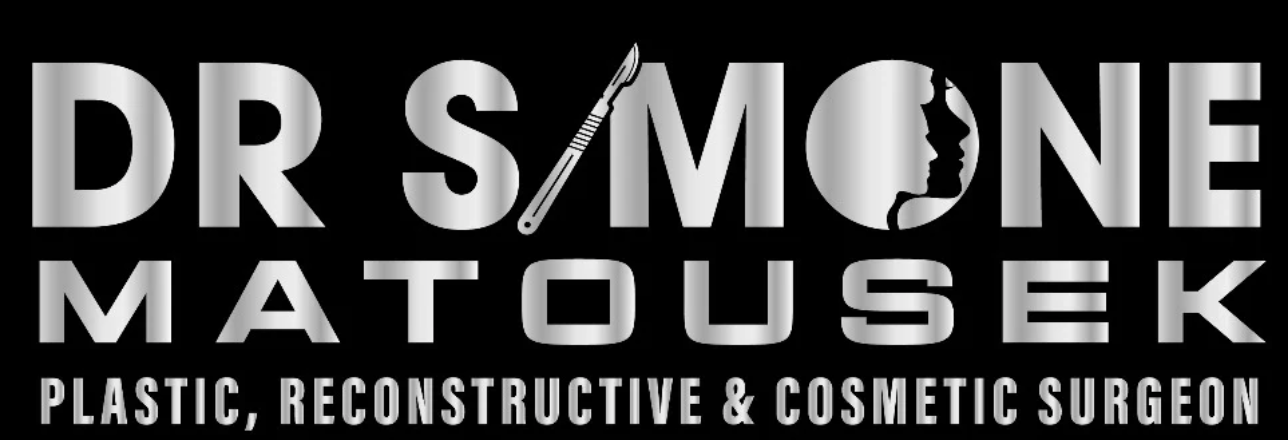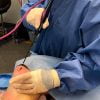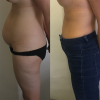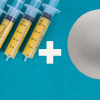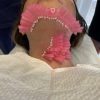A lot of anti-ageing is trying to slow and replace declining collagen levels. Loss of collagen is one of the primary causes of ageing and wrinkle formation. PDO or mono threads are a great tool for providing a scaffold to trigger gradual collagen synthesis and tighten the skin. These are a great alternative to filler for treating very fine lines where filler can cause lumpiness or migrate or where significant volume replacement is not required.
What is a PDO thread?
Also called mono threads, or Korean threads, PDO threads are a very fine dissolving thread of polydiaxonone, a polymer which has been used in surgical suture materials. It comes with a very fine needle to insert it precisely beneath the skin in the subdermal layer. The threads dissolve completely in around 3 months.
The threads vary in their length and thickness so treatments can be tailored to particular areas of the body and according to patient needs. The thicker threads provide more volume effect This dissolves in around 3 months and its insertion stimulates collagen synthesis
How do PDO threads work?
The insertion of the threads induces the body to produce collagen which leads to thickening and tightening of the skin. Effects start to be visible at 6 weeks and will continue to improve for up to 6 months.
The skin will appear smoother with less visible wrinkles. Treatments can be repeated in the same area every 6 months for greater effect.
PDO threads very effective for smoothing and firming the skin, but do not have lifting capacity. Barbed threads are a distinct type of thread made from the same material, however with small spikes along the suture line that give them lifting capacity; it is these types of threads that can be used for a face and neck thread lift.
Which areas can be treated with PDO threads?
Almost any area where there are deeper wrinkles, folds or multiple fine lines will improve with PDO threads.
The neck skin is an area where PDO threads can be used to help to reduce generalised skin sagginess or crepeyness. Neck skin is thin, making fillers prone to visibility in this area. More aggressive laser treatments which can work for the face cannot be used on the delicate neck skin. Multiple threads can be placed all along the neck skin in a criss cross manner.
Laying down multiple PDO threads can help thicken and tighten the skin in any area. Even body areas such as around the knee and elbow can be effectively treated with PDO threads.
How is the treatment performed?
Topical local anaesthetic application is recommended for one hour prior to treatment to ensure it is comfortable. Although the needles are very fine, some areas such as the neck require insertion of 50 plus threads.
What aftercare is required?
Icing immediately afterwards can control bruising and swelling.
Especially if a mobile area such as the neck has been done, it might feel quite tight and vigorous movements should be restricted for at least a week after treatment.
If areas of the face have been done, avoid exaggerated facial movements as threads can move or extrude.
Radiofrequency, other heat treatments such as broadband light and fillers should not be done in the area for 3 months as they can accelerate thread dissolution. Other facial treatments that apply heat should ideally be avoided as well.
What are the potential side effects?
Bruising can occur; it not usually widespread but can occur at some points of needle insertion. It is best to stop all anti-inflammatories such as aspirin or neurofen and fish oil 10 days before a thread treatment. Taking Arnica two days prior to treatment can minimise bruising.
Rarely people can react to the threads, however as they are very thin and fine, these reactions tend to be limited.
Threads can extrude after insertion, however they are easy to trim if this occurs and is more a nuisance and tends to occur with only single threads rather than an ongoing problem.
Book your appointment with Dr Simone Plastic Surgeon.
